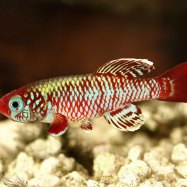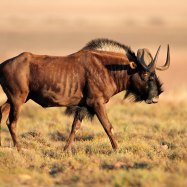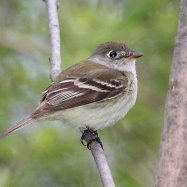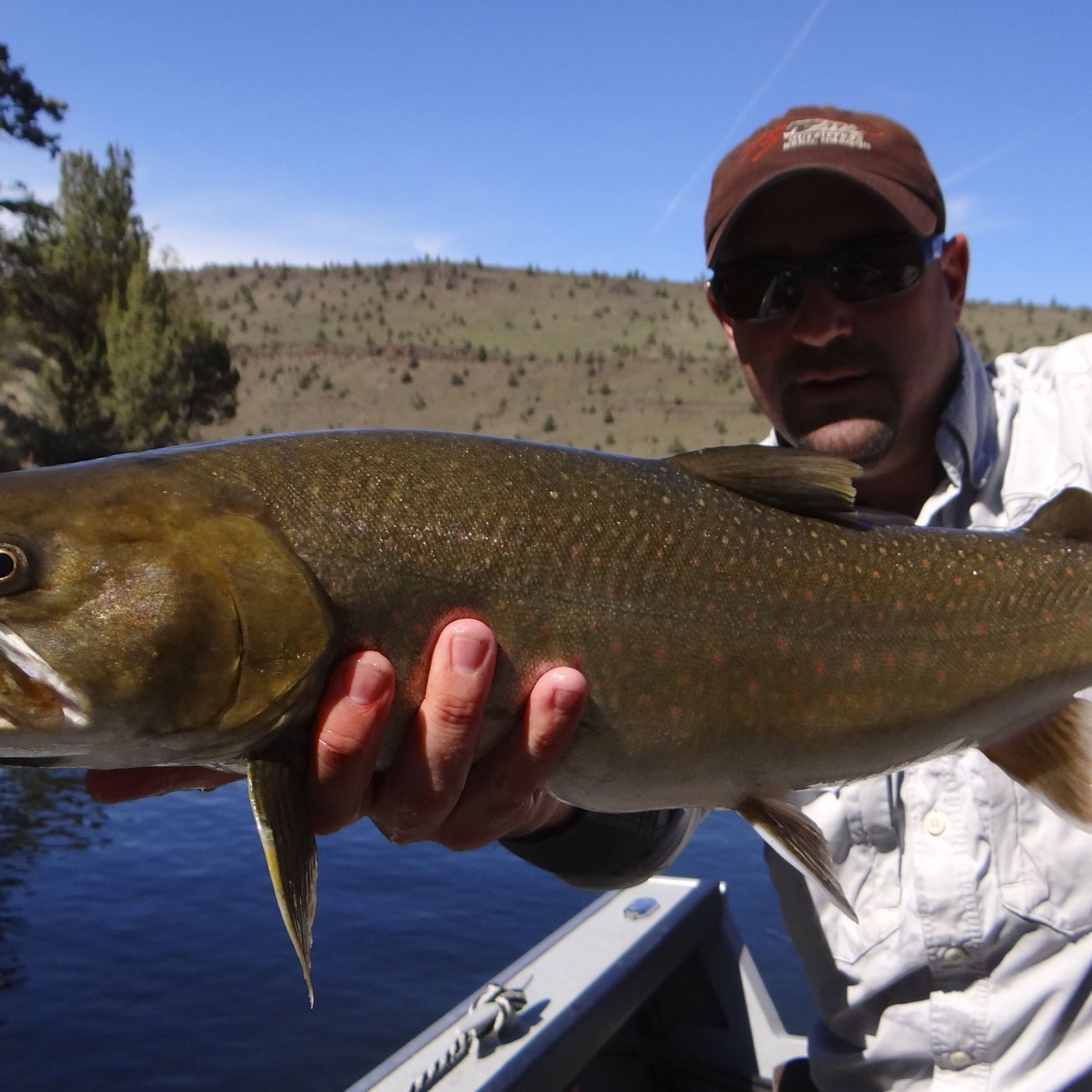
Bull Trout
Up to 36 inches
Bull Trout, also known as the Dolly Varden, can be found in rivers and streams across North America. They belong to the salmon family and can grow up to 36 inches in length. Their streamlined and elongated body shape allows them to thrive in fast-moving currents. #BullTrout #SalmonFamily #StreamFish
Animal Details Summary:
Common Name: Bull Trout
Kingdom: Animalia
Habitat: Freshwater
Bull Trout: The Elusive Carnivore of North America
Bull trout, scientifically known as Salvelinus confluentus, is a unique and fascinating fish species found in the freshwater rivers and streams of North America. This carnivorous fish, with its stunning coloration and agile body, has captured the imagination of people for centuries. In this article, we will dive deep into the world of bull trout and discover what makes them one of the most interesting and elusive creatures in the animal kingdom.Anatomy and Physical Characteristics
Bull trout belongs to the Kingdom Animalia, classified under the phylum Chordata and class Actinopterygii Bull Trout. They are also a part of the order Salmoniformes and family Salmonidae, which includes other well-known fish such as salmon and char. Bull trout has a streamlined and elongated body, reaching up to 36 inches in length, making them one of the largest species in the Salmonidae family.One of the striking features of bull trout is their coloration. Their back is olive-green to blue-gray, their sides are silver, and their belly is white. This coloration helps them blend into their surroundings, making them less vulnerable to predators. Additionally, bull trout has small, sharp teeth, which they use to prey on smaller fish and invertebrates.
Habitat and Distribution
Bull trout is native to North America, specifically Canada and the United States. They are primarily found in the cold and clean freshwater bodies, such as streams and rivers, with temperatures ranging from 38-60 degrees Fahrenheit. These fish thrive in clear and well-oxygenated water, making them sensitive to changes in their habitat Bark Beetle.Geographically, bull trout can be found in the northwestern region of North America, from the Yukon Territory in Canada to California in the United States. They also have significant populations in the Great Lakes and the Hudson Bay. Their range has significantly decreased in recent years due to human interference and the introduction of non-native species.
Feeding Behavior
As mentioned earlier, bull trout are carnivorous fish, which means they primarily feed on other animals. Their diet consists of smaller fish, such as minnows and sculpins, and invertebrates like crustaceans and insects. To catch their prey, bull trout uses their sharp teeth and their swift movements. They are opportunistic feeders, and their diet may vary depending on the availability of food in their environment.Bull trout also plays a vital role in the ecosystem by controlling the population of their prey species. In this way, they help maintain a healthy balance in the food chain.
Conservation Status
Unfortunately, the population of bull trout has declined significantly over the years due to various human activities. One of the significant threats facing this species is habitat destruction. The increase in urbanization and development has led to the degradation of their natural habitat, making it difficult for them to survive. Due to the specificity of their habitat requirements, even small changes can have a severe impact on their population.Moreover, the introduction of non-native species, such as rainbow trout, has also posed a threat to bull trout. These non-native species compete with bull trout for food and even prey on their young, leading to a decline in their population.
Due to these threats, bull trout is listed as a species of concern by the US Fish and Wildlife Service and is protected under the Endangered Species Act. Several conservation efforts are underway to protect this species, including habitat restoration and the removal of non-native species from their habitat.
The Bull Trout's Importance to Native Communities
In addition to their ecological importance, bull trout also holds cultural significance for many Native American communities. They have been an essential part of the livelihood and traditional practices of these communities for centuries. Many indigenous communities rely on bull trout for food and use them in ceremonies and rituals.However, the decline in bull trout's population has directly affected these communities, threatening their cultural traditions and well-being. Therefore, the conservation of bull trout is not just crucial for the environment but also for preserving the cultural heritage of Native American communities.
Bull Trout and NLP
Natural Language Processing (NLP) is a branch of artificial intelligence (AI) that deals with the interaction between computers and human language. It allows machines to analyze, understand, and generate human language, making it an integral part of many technological advancements.One of the main applications of NLP is in sentiment analysis, where it can analyze text or speech to determine the writer's or speaker's emotions. NLP is also used in language translation, chatbots, and speech recognition systems.
But how does NLP relate to bull trout? Well, the answer lies in the vast amount of data collected about this species and its habitat by various organizations and researchers. With the help of NLP, we can process this data and extract valuable insights into the behavior and conservation status of bull trout. This information can then be used to make more informed decisions to protect this species and its habitat.
In Conclusion
Bull trout, with its fascinating anatomy, feeding behavior, and cultural significance, is a truly remarkable creature of North America. However, human activities and interference have threatened this species, making it critically endangered. It is our responsibility to take action and conserve this species to maintain the balance of our ecosystem and preserve the cultural traditions of indigenous communities.With the advancements in technology, such as NLP, we can gain a better understanding of bull trout and make more effective conservation efforts. It is time for us to come together and protect this elusive carnivore before it's too late.

Bull Trout
Animal Details Bull Trout - Scientific Name: Salvelinus confluentus
- Category: Animals B
- Scientific Name: Salvelinus confluentus
- Common Name: Bull Trout
- Kingdom: Animalia
- Phylum: Chordata
- Class: Actinopterygii
- Order: Salmoniformes
- Family: Salmonidae
- Habitat: Freshwater
- Feeding Method: Carnivorous
- Geographical Distribution: North America
- Country of Origin: Canada and United States
- Location: Rivers and streams
- Animal Coloration: Olive-green to blue-gray on the back, silver sides, and white belly
- Body Shape: Streamlined and elongated
- Length: Up to 36 inches
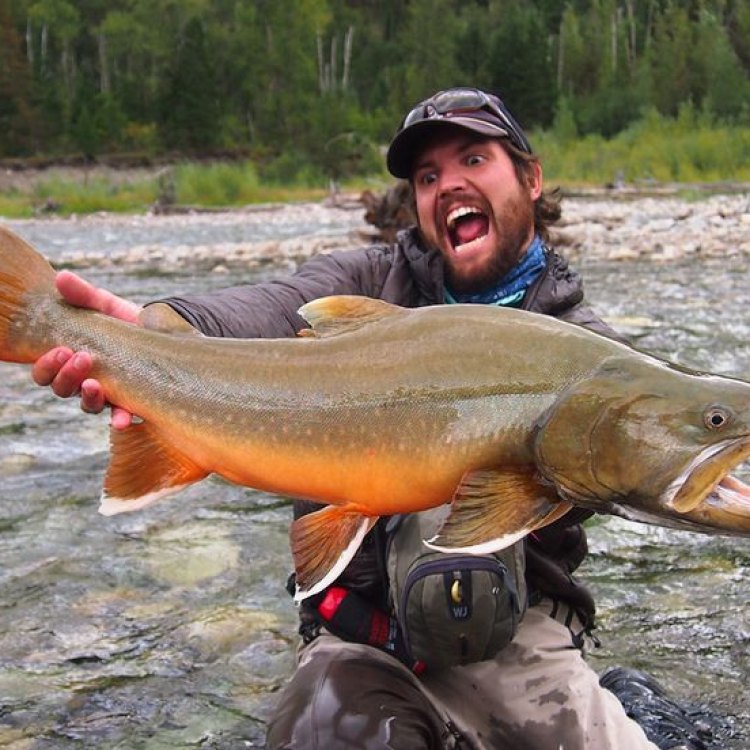
Bull Trout
- Adult Size: Large
- Average Lifespan: 10 to 15 years
- Reproduction: Sexual
- Reproductive Behavior: Anadromous
- Sound or Call: No distinct sound or call
- Migration Pattern: Migratory
- Social Groups: Solitary
- Behavior: Aggressive and territorial
- Threats: Habitat loss, pollution, overfishing
- Conservation Status: Species of concern
- Impact on Ecosystem: Keystone species
- Human Use: Sport fishing
- Distinctive Features: Large size, elongated body, large jaws
- Interesting Facts: Bull Trout are closely related to Dolly Varden trout and Arctic char
- Predator: Humans, bears, birds of prey
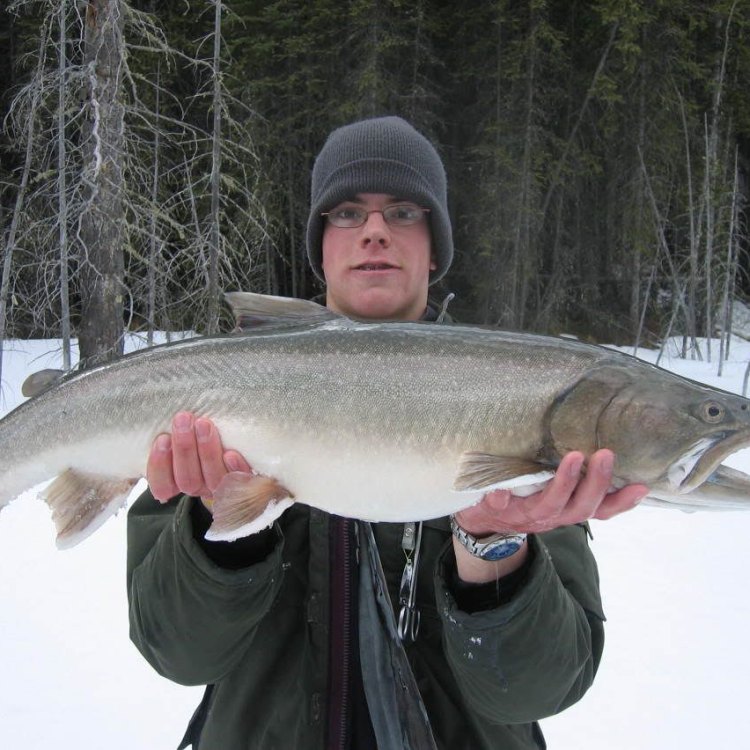
Salvelinus confluentus
Bull Trout: The Majestic Keystone Species of North America
North America is home to a diverse array of wildlife, but one species stands out for its unique characteristics and vital role in the ecosystem - the Bull Trout. Known for their large size, aggressive behavior, and impressive migration pattern, these fish not only play a crucial role in the ecosystem but also hold a special place in the hearts of avid anglers.In this article, we will take an in-depth look at the Bull Trout, exploring its distinctive features, interesting facts, behavior, and role in the ecosystem. We will also discuss the threats it currently faces and its conservation status, highlighting the importance of preserving this magnificent species for future generations PeaceOfAnimals.Com.
The Mighty Bull Trout
The Bull Trout, scientifically known as Salvelinus confluentus, is a freshwater fish native to the cold and clear streams and lakes of western North America. They can be found in Alaska, Yukon, British Columbia, Alberta, Washington, Oregon, Idaho, and Montana. These regions offer the ideal habitat for the Bull Trout - cold, swift-moving water with deep pools and rocky substrates.The average size of an adult Bull Trout is between 24 to 30 inches and can weigh anywhere from 5 to 20 pounds. They have an elongated body with a flat head and large jaws, giving them a fierce appearance. The color of their body can vary from olive-green to dark blue on their back, with a silvery belly. What sets them apart from other trout is their unique white leading edge on their pectoral, pelvic, and anal fins.
Life Span and Reproduction
Bull Trout can have an average lifespan of 10 to 15 years, with some individuals living up to 20 years in the wild. They reach sexual maturity at around 4 to 6 years of age, and the spawning season occurs during the fall Baiji.Unlike other trout species, the Bull Trout has a distinct reproductive behavior - they are anadromous. This means that they are born in freshwater, spend a significant portion of their life in saltwater, and then return to freshwater to spawn. During the spawning season, female Bull Trout will dig a nest, called a redd, in gravel beds in the stream or lake where they were born. They can lay up to 7,000 eggs, and the male will fertilize them before they hatch.
The Mighty Migration
One of the most fascinating aspects of the Bull Trout is its impressive migration patterns. This fish can migrate up to hundreds of miles in freshwater systems, traveling from small streams to large rivers and even crossing waterfalls. This migration is crucial for their life cycle, as it allows them to access suitable habitat for feeding, spawning, and rearing.The Bull Trout is known for its strong homing instinct, making it highly susceptible to habitat disruption and fragmentation. Any structures or barriers that prevent these fish from completing their migration can have a severe impact on their population.
Social Behavior and Characteristics
Bull Trout are solitary creatures and usually do not form social groups, unlike other fish species. They are aggressive and territorial, especially during the spawning season, and will fiercely defend their redd and young. They have been known to attack and chase away larger fish, including other trout and even predatory fish.This behavior makes them challenging to catch for anglers, earning them the nickname "the fish of 10,000 casts." They require a high level of skill and patience to catch, making them a highly coveted trophy fish for the avid anglers.
The Threats to Bull Trout
Despite their mighty size and aggressive behavior, Bull Trout face numerous threats to their survival. One of the most significant threats is habitat loss due to human activities such as dam construction, urbanization, and agriculture. As they require specific habitats for their migration and spawning, any disruption can have a severe impact on their population.Pollution is also a significant threat to Bull Trout. As they are sensitive to water quality, any pollution can affect their survival and reproductive success. Overfishing is also a significant concern, as these fish are highly desirable for sport fishing.
Conservation Status: Species of Concern
Due to these threats, the Bull Trout is currently listed as a species of concern by the U.S. Fish and Wildlife Service. This means that they are not currently listed as endangered or threatened but are at risk of becoming so in the future if actions are not taken to address the threats they face.Fortunately, there are ongoing efforts to protect and conserve the Bull Trout. Several conservation organizations, as well as state and federal agencies, are working together to restore and protect their habitat, implement fishing regulations, and raise awareness about the species' importance.
The Keystone Species
One of the most critical roles of the Bull Trout in the ecosystem is that of a keystone species. This means that their presence plays a vital role in maintaining the balance and diversity of the ecosystem. The Bull Trout is a top predator that feeds on smaller fish and invertebrates, keeping their populations in check.Their migration also helps transport nutrients from one body of water to another, which is crucial for the health of the ecosystem. If Bull Trout were to disappear, it would significantly impact the entire food web and have a ripple effect on other species and the health of the ecosystem.
Human Use and Interesting Facts
Aside from their critical role in the ecosystem, Bull Trout is also a highly prized fish for sport fishing. Their large size and aggressive behavior make them a challenging catch for anglers, making them a popular target for recreational fishing. However, strict regulations are in place to ensure their population is not overfished and to protect their habitat.One interesting fact about the Bull Trout is that they are closely related to two other fish species, the Dolly Varden trout and the Arctic char. All three are in the same genus, Salvelinus, and can sometimes hybridize in the wild.
Predators of Bull Trout
Apart from humans, the main predators of Bull Trout include bears, birds of prey, and larger fish such as Northern Pike and Cutthroat Trout. Bears will often feed on Bull Trout during their spawning season, snatching them from the water as they protect their nests. Birds of prey, such as eagles and ospreys, are also skilled at catching Bull Trout from the surface of the water.A Majestic Species Worth Protecting
In conclusion, the Bull Trout is a majestic, keystone species that plays a vital role in the ecosystem and holds a special place in the hearts of anglers. Its impressive migration pattern, aggressive behavior, and distinctive features make it a unique species, worth protecting and preserving for future generations to come. As we continue to face numerous environmental challenges, it is crucial to recognize and appreciate the value of the Bull Trout and take action to conserve and protect their habitats. By doing so, we can ensure that these magnificent fish continue to thrive in their natural habitats.
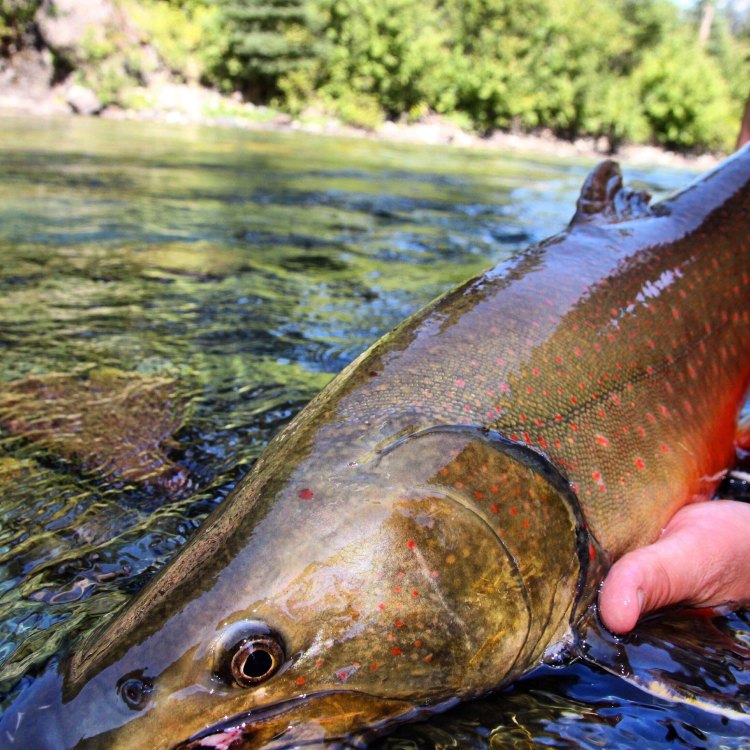
Bull Trout: The Elusive Carnivore of North America
Disclaimer: The content provided is for informational purposes only. We cannot guarantee the accuracy of the information on this page 100%. All information provided here may change without prior notice.




